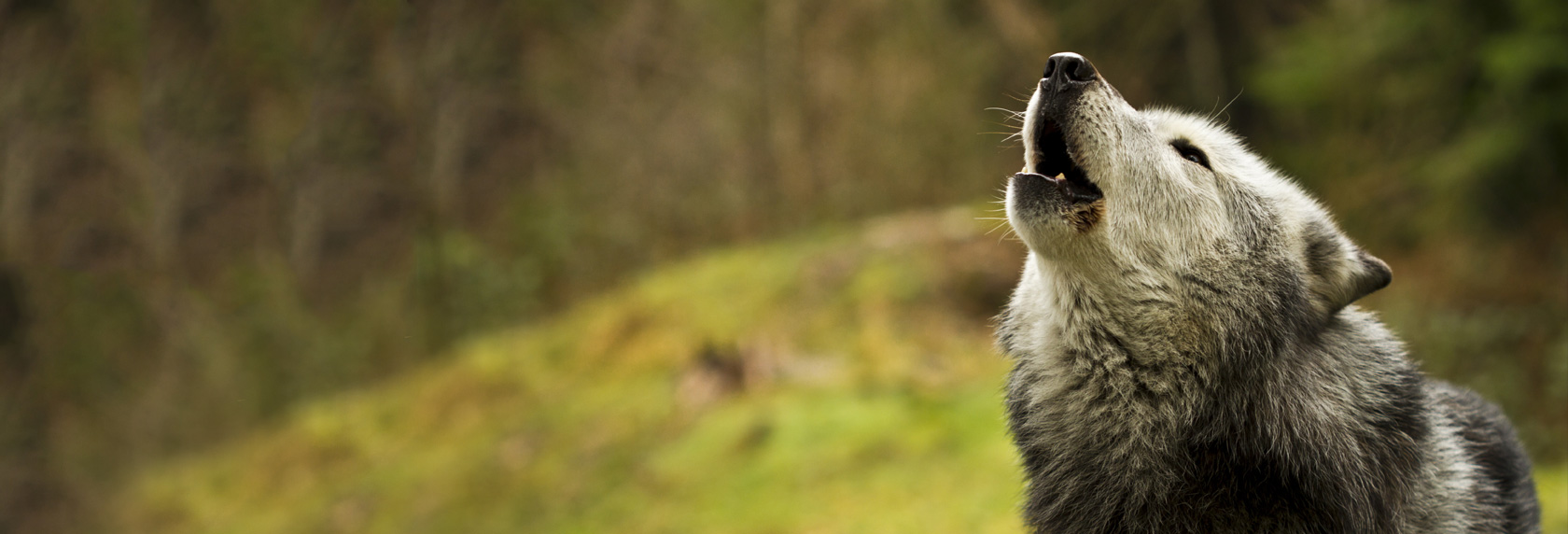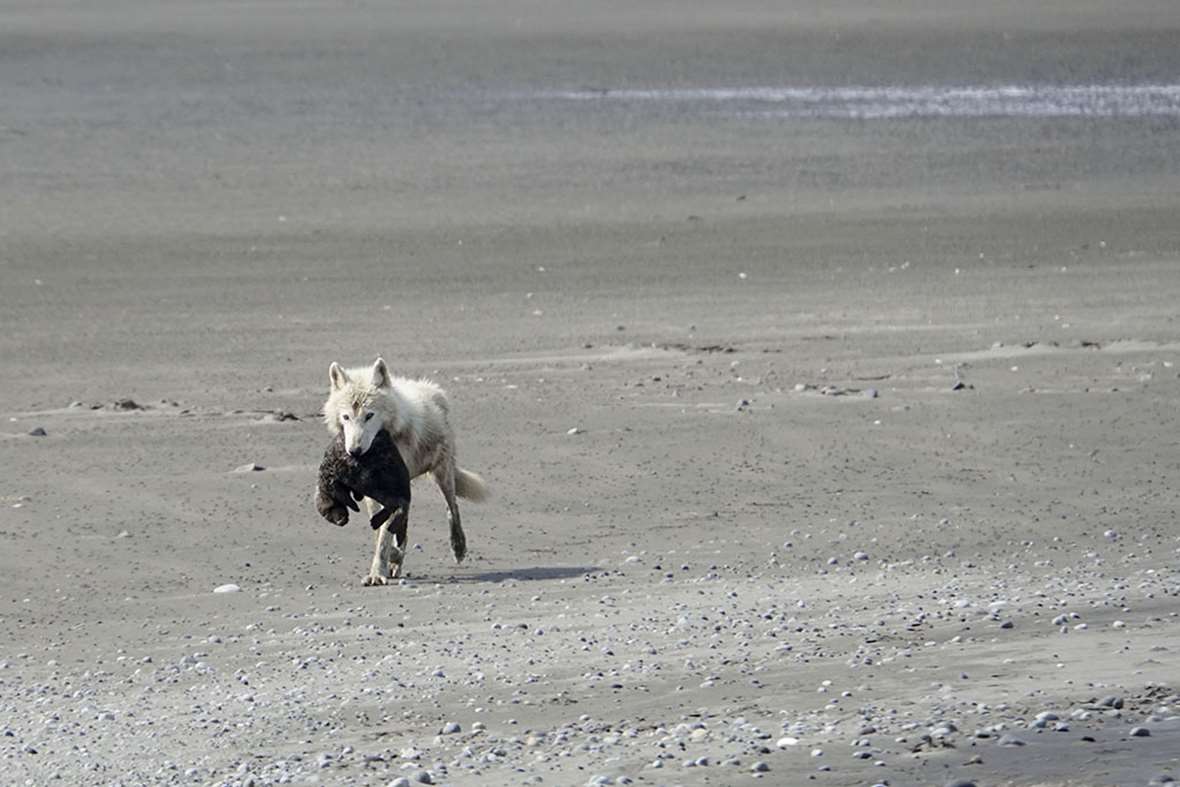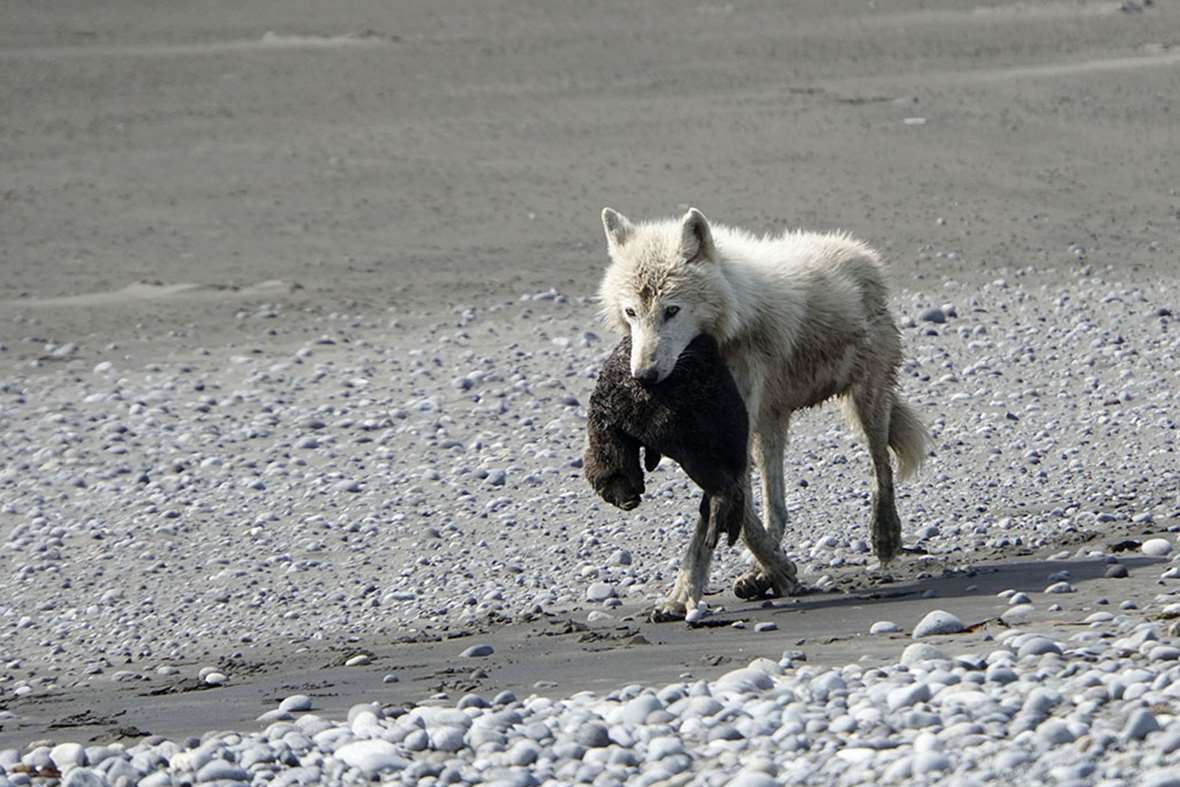Katmai National Park is one of the most pristine wildlife preserves in North America. Located along Alaska's Pacific coast, it's home to over 1,000 different species – and amidst all that biodiversity, you'll sometimes find unusual relationships between predator and prey.
For ranger Kaitlyn Kunce, one such discovery came during a recent marine debris survey in the park, when she and her co-workers stumbled across a grey wolf carrying its catch – and the meal choice was one they'd never encountered before. Clutched between the wolf's jaws was a young sea otter pup.
"The wolf travelled along the beach carrying the otter far from the water line. It passed by us, took one glance back, then continued on," recalls Kunce. "A predator of the land with a predator of the sea. Little is known about the relationship between wolves and otters, but we saw a small glimpse of it."
We've long recognised that the wolf population of the Pacific Northwest region has a unique relationship with the ocean. Each summer, Katmai’s waters fill with salmon returning from the ocean to spawn, and for the local canids, it's a seafood snack that's just a dive away. Herring eggs are also a common rotation at mealtime.
But for Kunce, seeing an otter-eating wolf was something new.
Over the past several years, anecdotal reports and scat evidence of wolf-otter predations have left scientists with more questions than answers. Were they actively hunting, or simply scavenging the occasional washed-up carcass? In the case of Kunce's sighting, the wolf's underfur was wet to the shoulders, indicating that the animal had at least ventured into the shallows to retrieve its unusual meal.
Sea otters typically inhabit coastal waters where their favourite foods – invertebrates like abalone and urchins – are most plentiful, but they do occasionally come ashore to rest. Pups stay with their mothers for nearly a full year, and female otters will often aggressively defend their young in the face of danger.
It's possible that this young pup was sick or injured, or perhaps it had become separated from its mother before the wolf found it.
When it comes to salmon, however, we know that the wolves are not simply scavenging fish carcasses. Alaska Fish and Game biologist Dave Person has been monitoring packs catching, killing and eating salmon in the area over the past five years. "They’re not as skilful as bears at fishing,” he says. "Most of the fishing takes place when the tide is low, on the flats where streams are crossing through the intertidal zone."
The otter-eating encounter might be unusual, but it's also an encouraging sign. Until ten years ago, spotting an Alaskan wolf in the wild was an extraordinarily difficult feat, so the presence of active wolves here is a great testament to the overall health of the Katmai ecosystem.
Early in the last century, Alaska's wolves were hunted with virtually no controls, and bounties were commonplace. Well into the 1970s, misguided control policies aimed at increasing game populations took a heavy toll. Trapping, poisoning and aerial gunning hobbled the region's largest packs, and it took some thirty years for these predators to bounce back.
Today, wolf and other top-predator control measures continue to be a heavily debated topic in the state, but thanks to a strong focus on reducing conflicts with farmers and hunters, Alaska is now one of the largest wolf strongholds in the US. Estimates put the population at 7,000 to 12,000, and park officials are determined to keep it that way.
The National Park Service has set up a system of remote cameras throughout Katmai in the hope of learning more about predator-prey interactions like this one. "This isn’t the only relationship between terrestrial and marine wildlife we don’t know enough about," explains Kunce, adding that evidence suggests local bears could also be preying on marine mammals.
"Maybe we will see a bear catch an otter or seal," she says. "Maybe we will see more, maybe a wolf catching an otter, or maybe another first."
You can follow along with the project and its discoveries on the NPS Changing Tides website.
source





No comments:
Post a Comment